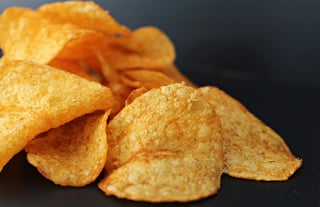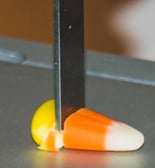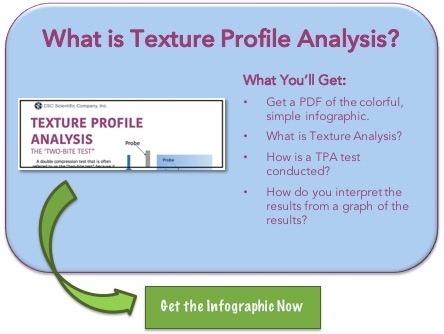While savoring a delicious meal, the age-old saying "It's all about the taste, not the appearance" often resonates. The visual aspect simply enhances the overall flavor experience. When a dish both looks and tastes exceptional, diners are quick to give it high praise.
Food purchasers and food manufacturers understand that taste isn't the only factor at play. If a food product lacks the right feel or appeal, the initial bite may also be the final one. They require an objective measure of these sensory aspects that is both consistent and reproducible. These sensory aspects fall into a category called texture.
What Makes Texture Essential in the Culinary Experience?

The sensation of texture plays a crucial role in the sensory journey of a food product for customers. It can signify freshness or ripeness in certain foods, while also significantly impacting the overall enjoyment of a dish.
Renowned Chef, Mario Batali emphasizes the power of descriptive words like "crispy" in enticing customers. The term "crispy" evokes memories of indulging in delightful foods like potato chips, creating a connection between the description and a pleasurable eating experience. Similarly, terms such as "creamy" and "chewy" are widely used in food storytelling to evoke specific textural experiences.
Moreover, consumers often have specific expectations regarding texture based on the type of food they are consuming. For instance, cereal should maintain its crunchiness even when soaked in milk, and crackers should strike a balance between crispness and sturdiness to avoid crumbling into pieces.
What Defines Texture Characteristics?
Texture analyzers can measure a range of characteristics including hardness, crispness, adhesiveness, fracturability, elasticity, gel strength, stiffness, and chewiness. In the past, trained professionals served as texture analyzers, relying on their subjective experiences to assess products.
However, with the advent of advanced instruments, a more objective and scientifically repeatable method is now available. While some food processors still utilize human testers as a secondary check, modern food texture analyzers offer a comprehensive approach.  These analyzers can measure a single characteristic or provide a detailed texture profile of multiple sensory attributes. Advanced models come equipped with various probes and stages, allowing for customized test procedures to meet unique requirements.
These analyzers can measure a single characteristic or provide a detailed texture profile of multiple sensory attributes. Advanced models come equipped with various probes and stages, allowing for customized test procedures to meet unique requirements.
One popular test method involves simulating chewing by repeatedly compressing a sample with a probe, known as the "Two Bite Test." Additionally, specific probes and stands are designed for assessing texture attributes like gel strength, fruit ripeness, and meat tenderness. Texture analysis is a versatile tool used throughout the food supply chain, from research and development to production processes.
Where Can Texture Analysis be Applied?
Texture analysis is a versatile tool that is integrated across the entire food supply chain.
From the research and development stage where R&D departments explore innovative techniques to create specific textures during recipe development, to the production phase where Production Departments meticulously evaluate texture to guarantee a uniform and pleasing mouthfeel in the final output of the manufacturing process.
techniques to create specific textures during recipe development, to the production phase where Production Departments meticulously evaluate texture to guarantee a uniform and pleasing mouthfeel in the final output of the manufacturing process.
This comprehensive approach ensures that the texture of the food product meets the expectations of consumers and maintains a high level of quality from start to finish. By utilizing texture analysis at every step of the process, food manufacturers can fine-tune their products to perfection and deliver a consistent sensory experience to their customers.
In Conclusion, the Impact of Texture
The incorporation of Texture Analysis in modern food processing is truly invaluable. In today's dynamic market, consumers have diverse expectations when it comes to the sensory attributes of their food. With the aid of advanced texture analyzers, food manufacturers can skillfully craft these characteristics into their products and maintain control over them throughout the production process.
If you're intrigued by the idea of integrating texture analysis into your testing procedures, feel free to reach out to us at 800-621-4778. Stay tuned to our blog and website for further insights on texture analysis.
I trust that you found this information beneficial and engaging.
Cho
P.S. Interested in Subscribing? All you have to do is insert your email address into the box just to the right of the title.
P.P.S. Curious about how a texture analyzer operates? Check out this video for a closer look at the process!
P.P.P.S. Looking to delve deeper into the world of Texture Analysis? Explore further with this insightful resource.


